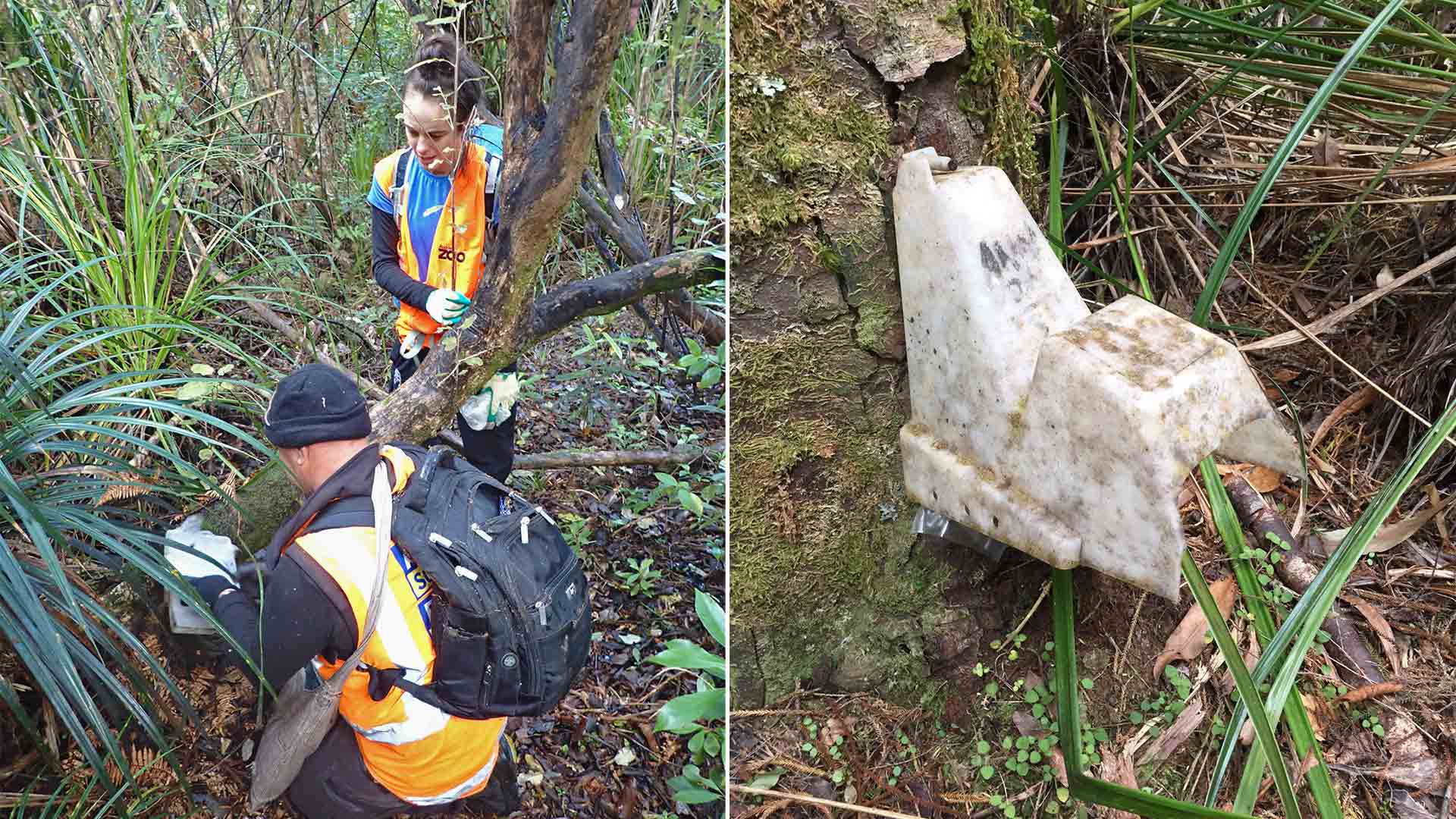Trekking through thick native bush for hours with a heavy rucksack full of bait isn’t the most glamourous of jobs, but for Field Work Coordinator Derryn Jakobi and colleagues, it’s an incredibly important one to complete.
Every three months, Derryn and the team venture into the heart of the Waitākere Ranges to complete bait-lining work in the Ark in the Park, a conservation partnership between Forest & Bird and Auckland Council. Though the nature of this work might not be well publicised, it is incredibly important for the survival of so much of our native flora and fauna.
Bait-lining/lines may not be a term you’re aware of – and for Derryn who has been doing it for a while now, it’s still a tricky concept to sum up in a few words.
“Bait-lining is used for predator/pest control in areas where native flora and fauna live. It helps keep pest numbers down so our native species can survive and hopefully thrive. We fill custom-made containers (often made from recycled milk bottles) with bait at different points on a transect or ‘line’ that spans a certain length through the Waitākeres. These are called bait stations.”
Despite the name, no physical lines are connecting these bait stations. Instead, bait stations are placed 50 metres apart along a line that can sometimes span 23 stations (1,150 metres in length!) and the team use flagging tape to keep on track – much like breadcrumbs in Hansel and Gretel! The bait lines run north to south and are 100 metres apart from each other to help maximize pest control across the Ark in the Park project. The area each bait line passes through seems relatively small alongside the entire Waitākere Ranges, but combined with the other 400 volunteers who also bait line within the area it covers a whopping 2270 hectares!





